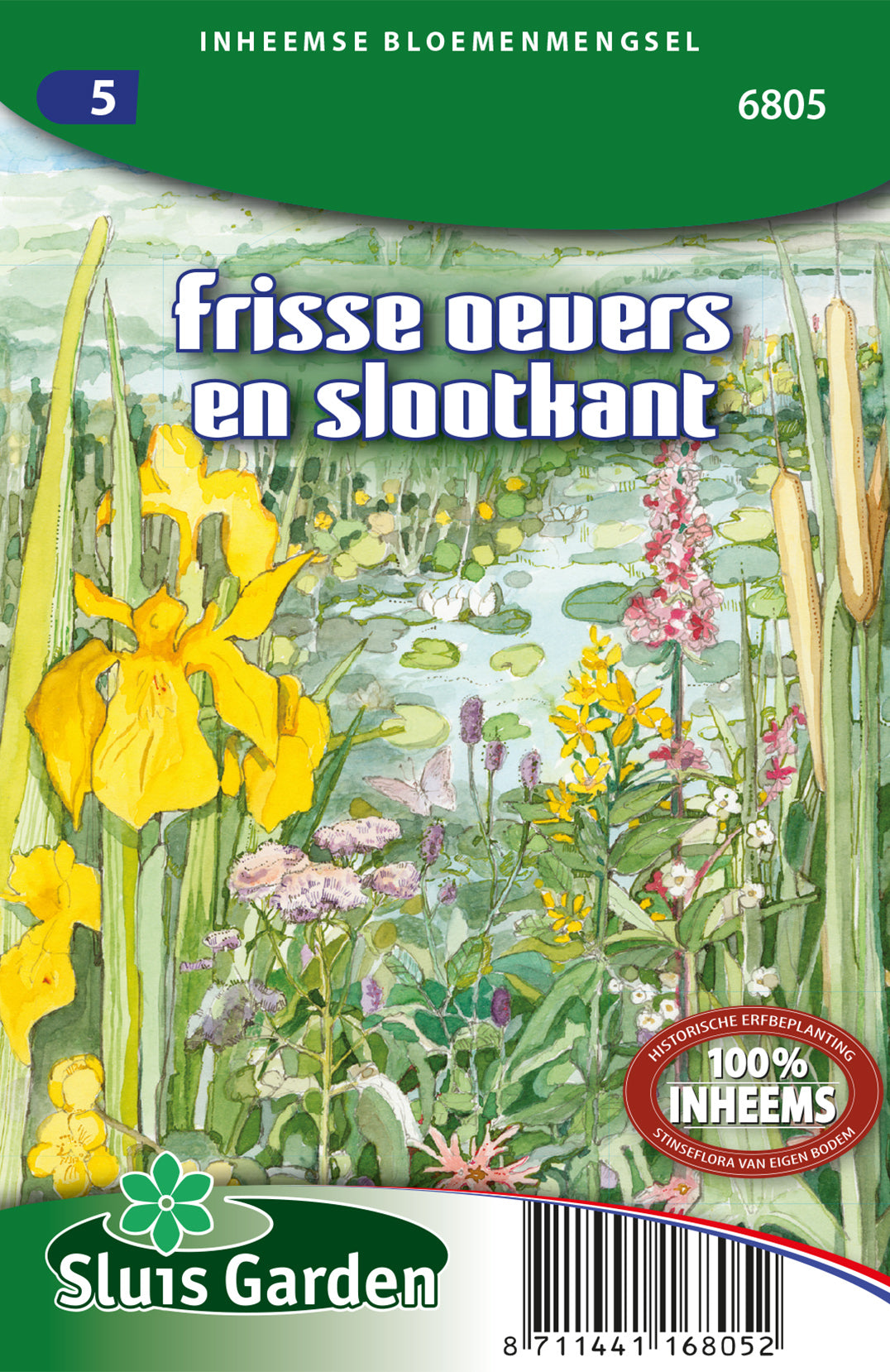1
/
of
1
Moist shores and ditch banks
Moist shores and ditch banks
Regular price
1.850 KWD
Regular price
Sale price
1.850 KWD
Unit price
/
per
Shipping calculated at checkout.
Couldn't load pickup availability
Creating a garden that mimics the conditions of moist shores and ditch banks involves selecting plants adapted to wet or waterlogged soils. These environments are typically characterized by damp conditions, so it's important to choose plants that thrive in such settings. Here are general guidelines for growing a garden inspired by moist shores and ditch banks:
**1. Site Selection:**
- Choose an area in your garden that receives consistent moisture, such as a low-lying area or a spot where water tends to collect. Ditch banks and moist shores are often found near water bodies, so try to replicate these conditions.
**2. Soil Preparation:**
- Improve soil drainage by adding organic matter, such as compost or well-rotted manure. While moist shores and ditch banks may have wet conditions, it's essential to avoid waterlogging, and well-draining soil is crucial.
**3. Select Moisture-Loving Plants:**
- Choose plants that are adapted to damp conditions. Native wetland plants and those that naturally grow along water bodies are excellent choices. Examples include:
- **Perennials:** Irises, astilbes, ferns, bee balm (Monarda), and ligularia.
- **Shrubs:** Clethra, dogwoods, and willows.
- **Grasses:** Carex, Juncus, and various ornamental grasses.
**4. Native Plants:**
- Consider incorporating native plants, as they are well-adapted to the local climate and support local ecosystems. Native plants also attract wildlife and contribute to biodiversity.
**5. Watering:**
- While moist shores and ditch banks receive natural moisture, it's essential to monitor the water levels. If there is a prolonged dry spell, provide supplemental watering to keep the soil consistently moist.
**6. Mulching:**
- Apply a layer of organic mulch to help retain soil moisture, suppress weeds, and regulate soil temperature. Mulching also mimics the natural conditions found in moist environments.
**7. Sustainable Practices:**
- Practice sustainable gardening by avoiding chemical pesticides and fertilizers. Instead, use organic alternatives, and encourage natural predators to control pests.
**8. Adapted Trees and Shrubs:**
- Choose trees and shrubs that tolerate wet conditions. Examples include river birch (Betula nigra), willows (Salix species), and red-twig dogwood (Cornus sericea).
**9. Wildlife Attraction:**
- Consider planting species that attract wildlife, such as butterflies and birds. Wetland plants often support diverse ecosystems, and your garden can contribute to local biodiversity.
**10. Maintenance:**
- Regularly check for signs of waterlogging or poor drainage. Adjust soil amendments or plant placement if needed. Remove any invasive plants that may disrupt the natural balance.
**11. Educational Resources:**
- Consult local gardening resources, wetland conservation organizations, or native plant societies to gain insights into specific plants and practices suitable for your region.
**12. Observation and Adaptation:**
- Observe how plants respond to the moist conditions in your garden. Adjust your plant selection and garden design based on your observations over time.
Creating a garden inspired by moist shores and ditch banks not only brings a unique aesthetic to your landscape but also supports plants adapted to wet conditions. Additionally, it contributes to the preservation of wetland ecosystems and provides habitat for various wildlife.
**1. Site Selection:**
- Choose an area in your garden that receives consistent moisture, such as a low-lying area or a spot where water tends to collect. Ditch banks and moist shores are often found near water bodies, so try to replicate these conditions.
**2. Soil Preparation:**
- Improve soil drainage by adding organic matter, such as compost or well-rotted manure. While moist shores and ditch banks may have wet conditions, it's essential to avoid waterlogging, and well-draining soil is crucial.
**3. Select Moisture-Loving Plants:**
- Choose plants that are adapted to damp conditions. Native wetland plants and those that naturally grow along water bodies are excellent choices. Examples include:
- **Perennials:** Irises, astilbes, ferns, bee balm (Monarda), and ligularia.
- **Shrubs:** Clethra, dogwoods, and willows.
- **Grasses:** Carex, Juncus, and various ornamental grasses.
**4. Native Plants:**
- Consider incorporating native plants, as they are well-adapted to the local climate and support local ecosystems. Native plants also attract wildlife and contribute to biodiversity.
**5. Watering:**
- While moist shores and ditch banks receive natural moisture, it's essential to monitor the water levels. If there is a prolonged dry spell, provide supplemental watering to keep the soil consistently moist.
**6. Mulching:**
- Apply a layer of organic mulch to help retain soil moisture, suppress weeds, and regulate soil temperature. Mulching also mimics the natural conditions found in moist environments.
**7. Sustainable Practices:**
- Practice sustainable gardening by avoiding chemical pesticides and fertilizers. Instead, use organic alternatives, and encourage natural predators to control pests.
**8. Adapted Trees and Shrubs:**
- Choose trees and shrubs that tolerate wet conditions. Examples include river birch (Betula nigra), willows (Salix species), and red-twig dogwood (Cornus sericea).
**9. Wildlife Attraction:**
- Consider planting species that attract wildlife, such as butterflies and birds. Wetland plants often support diverse ecosystems, and your garden can contribute to local biodiversity.
**10. Maintenance:**
- Regularly check for signs of waterlogging or poor drainage. Adjust soil amendments or plant placement if needed. Remove any invasive plants that may disrupt the natural balance.
**11. Educational Resources:**
- Consult local gardening resources, wetland conservation organizations, or native plant societies to gain insights into specific plants and practices suitable for your region.
**12. Observation and Adaptation:**
- Observe how plants respond to the moist conditions in your garden. Adjust your plant selection and garden design based on your observations over time.
Creating a garden inspired by moist shores and ditch banks not only brings a unique aesthetic to your landscape but also supports plants adapted to wet conditions. Additionally, it contributes to the preservation of wetland ecosystems and provides habitat for various wildlife.
Share

